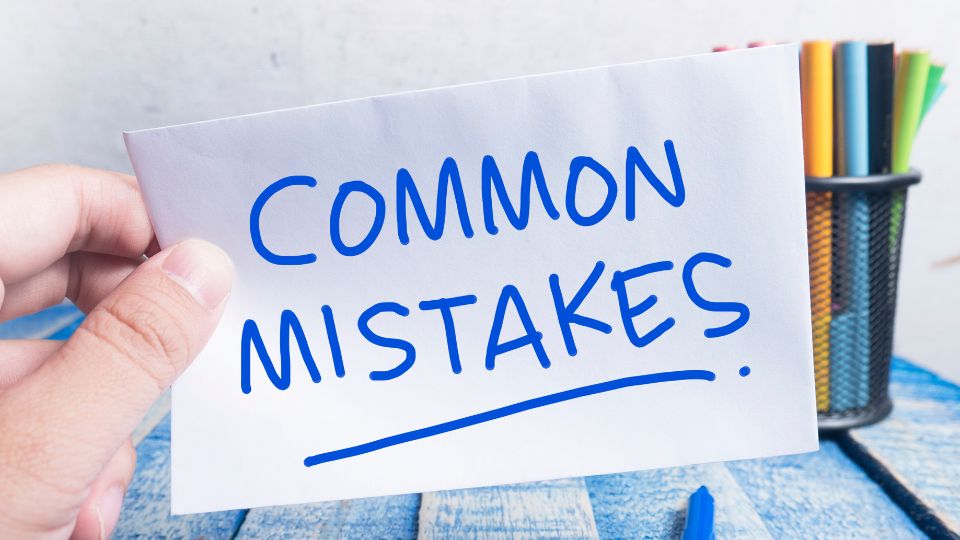Choosing the right Amazon category isn’t just a formality, it’s the invisible force behind visibility, ranking, and conversions. On Amazon, two sellers can sell the same product, yet one earns ten times more sales simply because their listing lives in the right category.
Take this example: Seller A lists a yoga mat under “Sports & Outdoors,” while Seller B lists the same mat under “Home Fitness Accessories.” Guess who wins? Seller B. Why? Because customers searching for “home workout essentials” find that listing instantly. Seller A, though selling the same product, gets buried under thousands of irrelevant results.
That’s the difference Amazon category selection makes. It’s not guesswork—it’s data-driven science. Your category determines how shoppers find you, how ads perform, and how Amazon’s algorithm interprets your offer. The right choice can turn an ordinary listing into a best-seller.
Understanding How Amazon Categories Work
Amazon’s category system is not random; it’s a carefully engineered hierarchy called a taxonomy. Each category (and subcategory) represents a unique customer intent. When you select a category in Seller Central, you’re assigning your product to a specific browse node—Amazon’s way of sorting products by purpose and function.
Every product also includes product type attributes, which help the algorithm decide when to show your listing in search results. If your attributes match what buyers are looking for—like “Material Type,” “Target Gender,” or “Usage Occasion”—you gain higher relevance. Misclassify them, and Amazon might suppress your visibility altogether.
Think of it like a map. If your product lives in the wrong neighborhood, shoppers won’t find it—even if it’s the best one on the block. That’s why category selection directly affects organic ranking, Buy Box probability, and ad placement. Amazon ads perform best when your listing belongs to the most relevant node because the algorithm rewards contextual accuracy.
The Psychology Behind Buyer Intent in Each Category
Every category on Amazon tells a story about why people buy. Some categories reflect necessity—like Health, Kitchen, or Baby products—while others trigger aspiration and emotion, like Beauty, Fashion, or Electronics.
Understanding buyer intent helps you align your product’s core benefit with the mindset of the shopper. For example, in needs-based categories, customers search logically (“best knee brace for running pain”). In desire-based categories, they respond emotionally (“luxury scented candles” or “stylish smartwatch”).
If you’re selling a knee brace that also looks sporty, would it belong in “Sports Accessories” or “Medical Supports”? The answer depends on your branding angle. If you position it for injury recovery, choose Health. If you position it for athletic performance, choose Sports. One decision changes the entire audience and competitive set.
This is where winning sellers thrive—they pick categories that align with how buyers feel when they shop, not just what they type. Category mastery is emotional intelligence translated into Amazon strategy.
Step-by-Step Framework for Smart Amazon Category Selection
Analyze Demand and Competition with Tools
Before deciding, dive deep into data. Tools like Helium 10 and Amazon Brand Analytics give you hard numbers to validate your assumptions. Look for category-level indicators such as:
- Average monthly revenue of top sellers
- Review count vs. sales volume
- Search volume of top keywords
These insights form the foundation of smart Amazon product category research.
Let’s say you’re evaluating “Pet Grooming” vs. “Pet Health Supplies.” If the top 10 products in Grooming average 4,000 reviews but those in Health Supplies average only 500 reviews yet similar revenue, that’s a sign the second category has better entry potential.
Remember, how to choose Amazon category isn’t about picking the biggest market—it’s about finding balance between demand and manageable competition. Check seasonality too; a category booming during Diwali or New Year might slow down later. Use Helium 10’s Trend Graphs or Google Trends to avoid temporary hype.
Identify Product Fit and Target Audience Behavior
Once you’ve analyzed data, assess whether your product belongs in that space. Category fit depends on who your customers are and why they buy.
Ask:
- What problem does my product solve?
- Who is my ideal buyer?
- What are they comparing it against?
If you’re launching a multipurpose product, test which category aligns better with your audience’s expectations. For instance, a compact blender could live under “Kitchen Appliances” or “Portable Juicers.” If your audience values convenience for office or travel, the latter performs better.
Also, study subcategory pricing. Some niches expect premium pricing (like Beauty or Wellness), while others reward affordability (like Home Essentials). Aligning price perception with category norms helps increase conversion rates.
Amazon’s “intended use” filters offer another clue. When setting up your listing, Amazon asks questions like “What’s the primary occasion?” or “Target user?” Choose options that mirror your target buyer’s behavior. The tighter the match, the stronger your keyword relevance signal becomes.
Validate with Keyword and Listing Insights
The final step is to validate your decision using keyword research. Open the top listings in your potential categories and analyze which keywords they rank for.
If listings in Category A use mostly informational or functional keywords (“orthopedic knee brace,” “pain relief support”), but your product ranks better for lifestyle or emotional keywords (“sports compression brace”), then Category B (“Sports Accessories”) may align better with your natural keyword fit.
To ensure scalability, compare your keyword pool against profitable Amazon categories. A category with fewer but high-intent keywords may outperform one flooded with irrelevant traffic.
Study listing copy, title patterns, and ad placements. Winning sellers maintain tight alignment between category, keyword intent, and product promise. It’s not about being everywhere—it’s about being in the right place. Check listing optimization techniques that improve category relevance.
Common Mistakes in Amazon Category Selection
Most new sellers make one of three fatal mistakes.
First, they chase “less competitive” categories thinking it’s easier to rank. But if that category doesn’t match their keywords or buyer search behavior, they lose traffic. Amazon rewards relevance, not loopholes.
Second, they pick categories based purely on profitability metrics without understanding market depth. A niche might show high margins but minimal search volume—leading to stagnation.
Third, many misinterpret BSR trends. A sudden BSR drop might mean seasonal demand, not sustained sales. Jumping into such categories leads to short-term gains and long-term burnout.
Remember, category selection mistakes aren’t a one-time trick—it’s an evolving decision that should grow with your product data and audience feedback.
Can You Change Your Product Category Later? Here’s What Happens
Yes, you can change your category—but with caution. Once your listing gains traction, moving categories can disrupt sales velocity and confuse Amazon’s algorithm.
If you must switch, go to Seller Central → Inventory → Edit Listing → More Details, then update the category, or submit a flat-file upload if multiple ASINs need reclassification.
However, beware of side effects. Your listing may temporarily lose keyword ranking and even Buy Box eligibility while Amazon re-indexes your data. Reviews remain, but relevancy resets.
In some cases, sellers strategically switch to unlock new ad placements or access niche audiences, but frequent changes signal inconsistency. Before moving, validate with fresh keyword data and ensure the new category truly fits your positioning.
Top-Selling and Profitable Amazon Categories in 2025
Wondering what are the top-selling Amazon categories in 2025? The data reveals a clear trend: health, home, and harmony.
Health & Personal Care continues to dominate, fueled by rising wellness consciousness. Sub-niches like posture correctors, knee braces, and fitness bands are evergreen.
Home & Kitchen thrives as remote work and lifestyle upgrades push demand for organization, storage, and aesthetics.
Fitness Accessories remain resilient, showing consistent double-digit growth.
Saturation doesn’t mean you can’t win. Even in crowded spaces, differentiation through branding and storytelling makes a difference. The most profitable Amazon categories are not always the biggest—they’re the ones where your product can stand out.
FAQs: Amazon Category Questions Answered
How do I choose the best category for my product on Amazon?
Start by studying top-performing ASINs in your niche. Use tools like Helium 10 to check keyword overlap and traffic distribution. Validate buyer search intent before locking in your category. That’s the foundation of smart Amazon category selection.
Which Amazon category is most profitable for beginners?
For new sellers, Home, fitness, and Wellness categories offer consistent demand with moderate competition. They’re broad enough for experimentation yet specific enough for focused branding.
Can I change my Amazon product category after listing?
Yes—but do it strategically. Frequent changes can reset your indexing and slow sales. Always gather data before switching.
How does Amazon decide product ranking within a category?
Amazon considers factors like sales velocity, conversion rate, and keyword match. The more relevant and better-performing your listing, the higher your rank within that category.
What are the top-selling Amazon categories in 2025?
Health & Personal Care, Home Improvement, and Sustainable Products dominate. These reflect modern lifestyle priorities—wellness, comfort, and eco-conscious living.
Conclusion: Your Category Defines Your Brand’s Future
Your category is more than a dropdown menu—it’s the ecosystem where your brand grows. Choosing wisely means controlling how buyers perceive your product, how Amazon indexes it, and how much visibility you command.
Smart Amazon category selection isn’t about chasing trends; it’s about finding alignment—between data, demand, and differentiation. Sellers who treat category as strategy, not admin work, create brands that thrive year after year.
So, before you hit “Publish,” pause and ask: Does my category tell the story my product deserves?
Because your category defines your brand’s destiny.
Take the Next Step Toward Category Dominance
Join our 3-day Amazon Training and master category selection, product research, and pricing like a pro.
Start today—because the right category today builds tomorrow’s best-selling brand.








